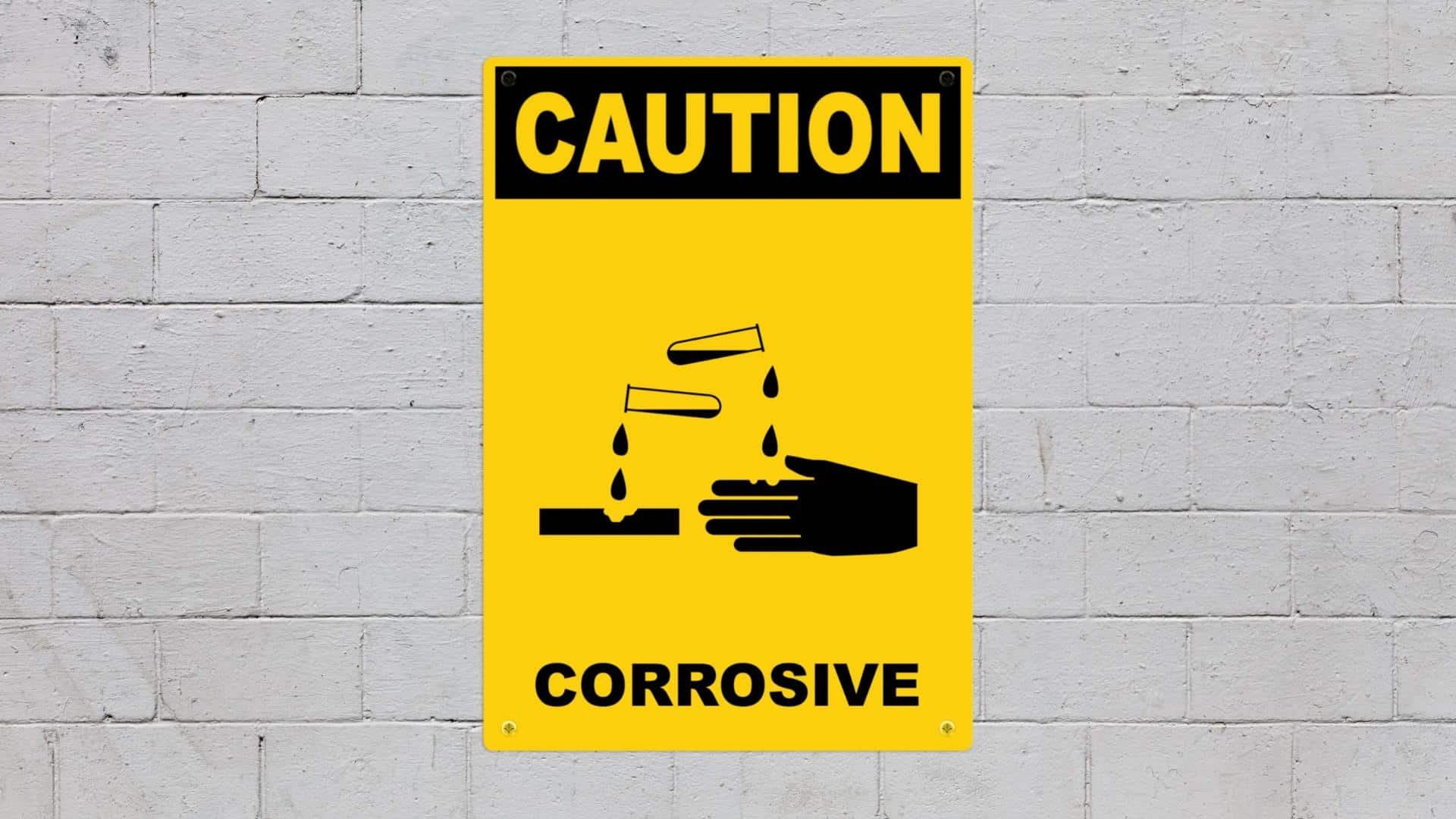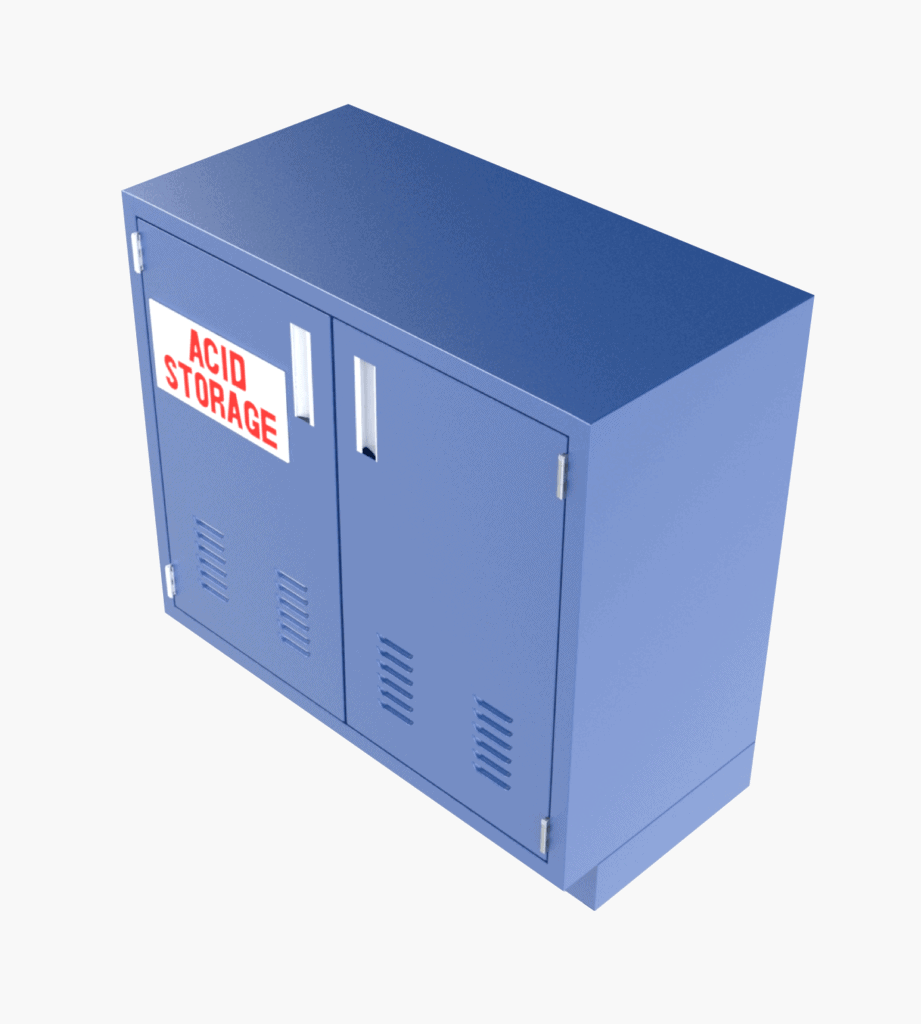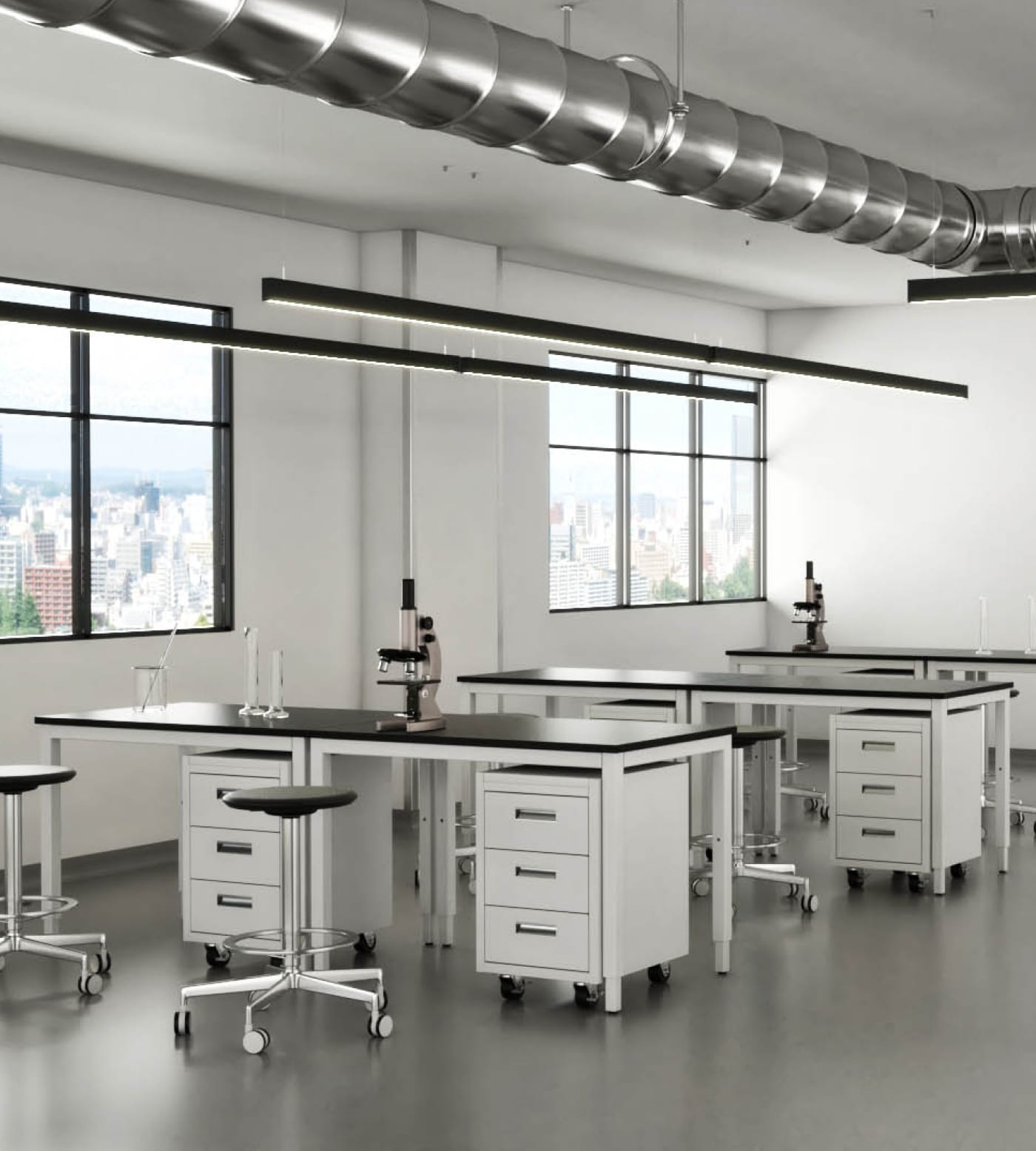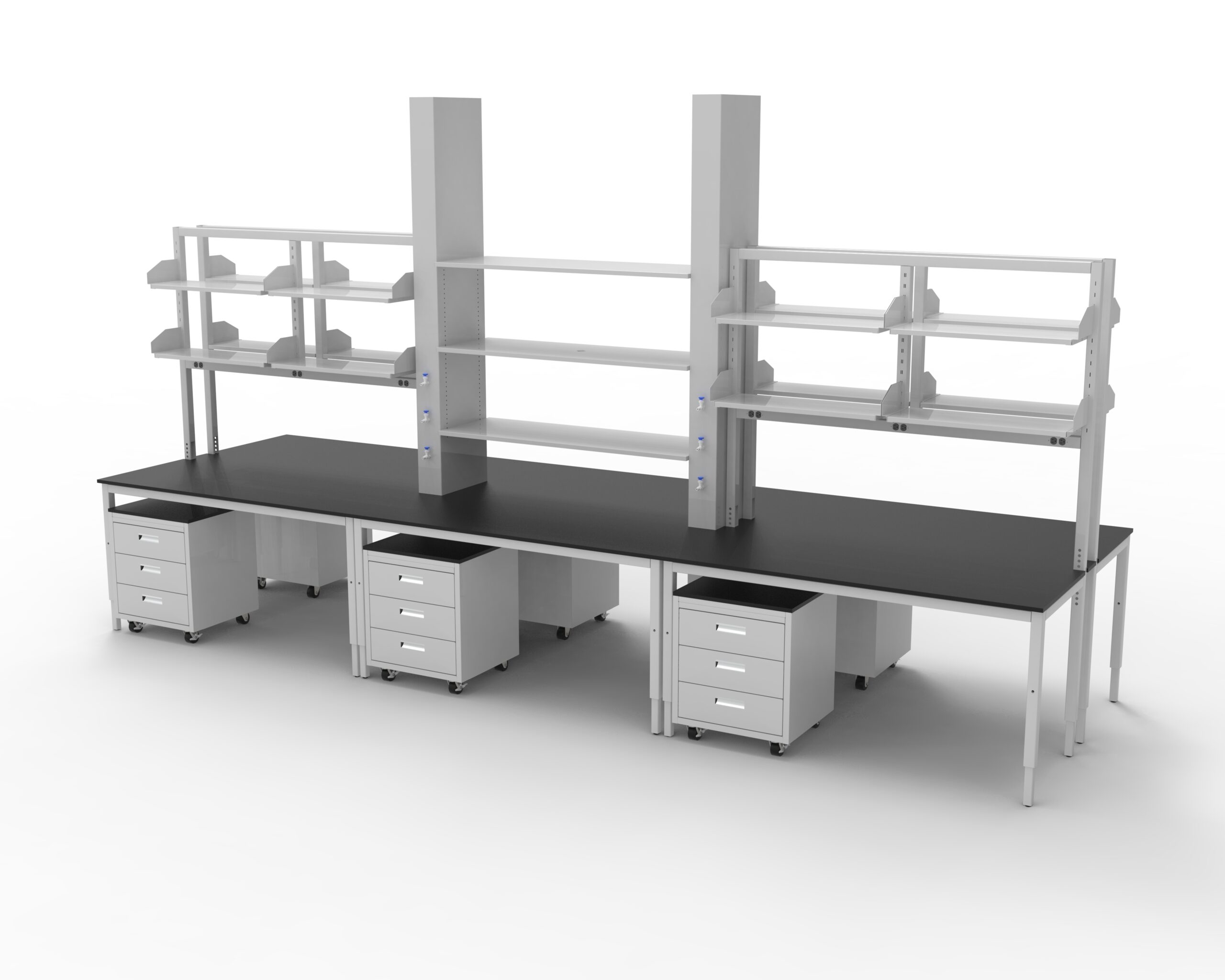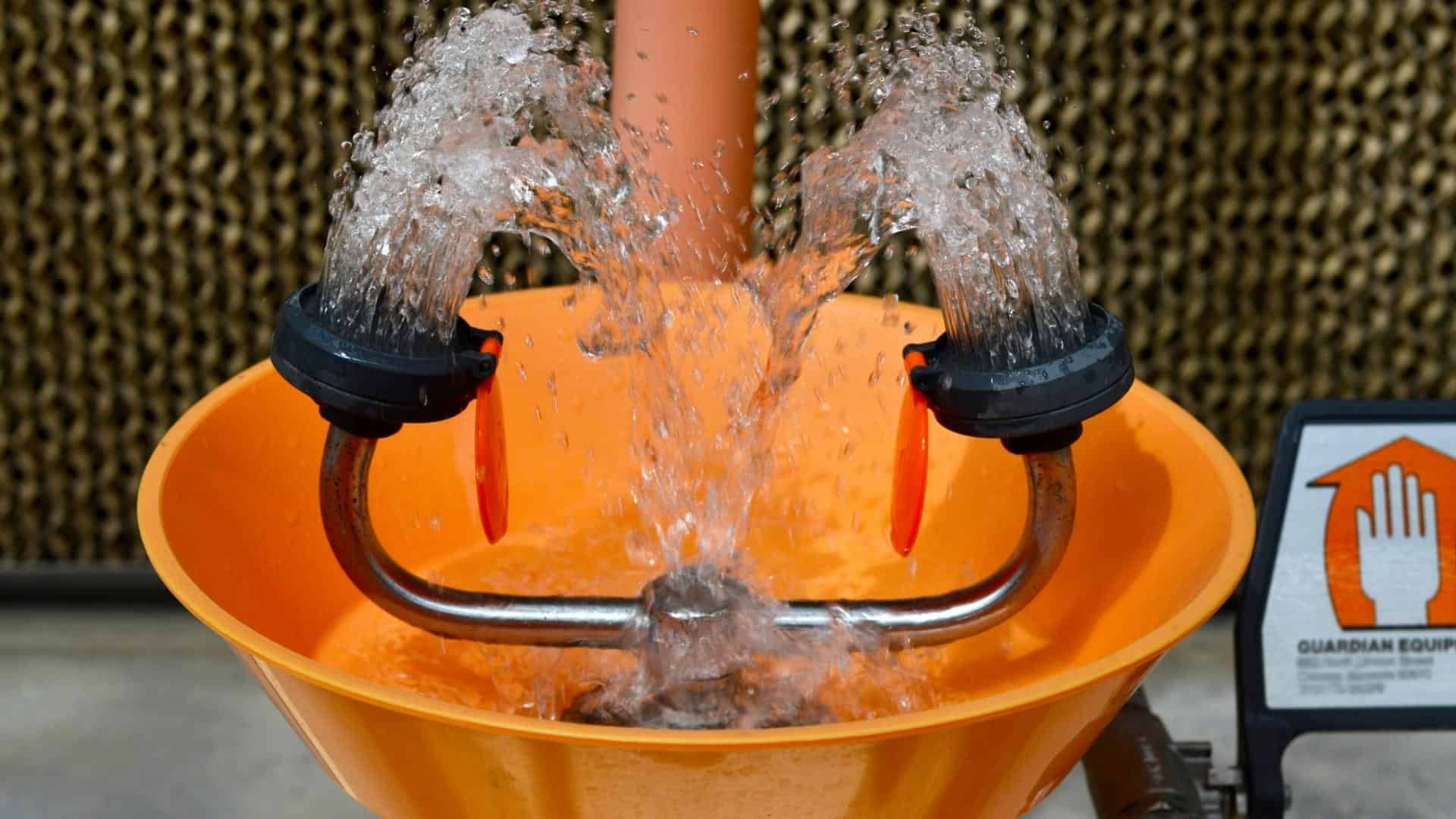Acid & Corrosive Cabinets 101: Requirements, Recommendations
What Is an Acid & Corrosive Storage Cabinet?
An acid and corrosive storage cabinet is designed to safely store acids and other corrosive materials. Instead of storing potentially dangerous chemicals on a simple shelf, acid safety cabinets allow you to store acids and corrosive materials in a container that is designed to prevent fires, leaks, and exposure to harmful fumes.
What Are Acids and Corrosive Materials?
Acids are chemicals that can donate protons or accept electrons to form bonds. The pH scale measures the acidity of water on a scale of zero to 14, with anything less than seven being acidic. Common acids used in laboratory settings include:
- Chloric acid
- Perchloric acid
- Nitric acid
- Sulfuric acid
Corrosive materials attack, damage, or destroy other substances, particularly living or organic tissue, through a chemical reaction. Many acids are corrosive, and some corrosive materials are acidic. However, not all corrosive materials are acids, and not all acids are corrosive. Common corrosive materials used in laboratory settings include:
- Bromine
- Hydrogen peroxide
- Sodium hydroxide
- Ammonia
Acid Storage Requirements
It’s important to note that the requirements for how to handle and store acids and corrosive materials are specific to the acid or corrosive material in question. The Centers for Disease Control and Prevention (CDC) offers guidelines for a variety of chemicals used in occupational capacities. These guidelines offer information on health risks, exposure limits, and safety recommendations.
How Does an Acid Cabinet Work?
Acid cabinets are lined with polyethylene, a material that is resistant to acids and corrosive materials. This means that if a corrosive chemical is spilled within an acid cabinet or a chemical releases corrosive gases, it won’t damage the cabinet itself.
Acid Cabinet Ventilation
Because acids and other corrosive materials may produce dangerous or harmful gases, acid safety cabinets must also be properly ventilated.
Most acid storage cabinets are placed directly under a fume hood to allow for ventilation of harmful fumes. PVC venting kits allow you to use PVC pipe to vent fumes from acid safety cabinets into a fume hood. Acid safety cabinets also have a removable back panel that can be used for venting.
Without a fume hood, harmful gases can corrode your acid cabinet and its hardware. In a worst case scenario, acid and corrosive storage cabinets can vent toxic fumes directly into your laboratory, creating a safety hazard. Make sure your acid cabinet is properly installed with proper ventilation for your intended use.
iQ Labs Acid & Corrosive Storage Cabinets
At iQ Labs, we offer durable, high-quality acid and corrosive storage cabinets that are both UL Listed and SEFA approved. Standard features include:
- Height: 29 inches or 35 inches
- Depth: 22 inches
- Width: 24–48 inches
- Polyethylene lining on all cabinet bodies, doors, and shelves
- Two venting holes in the back with two-inch hole plugs
- Removable back panel for venting
- OSHA-compliant labeling
- Optional drip pans and vent kits
- Multiple color options
Why Buy an Acid Storage Cabinet from iQ Labs?
Our team at iQ Labs provides custom acid storage cabinets for laboratories of all kinds. We offer shorter lead times than other manufacturers without sacrificing quality. If you’re looking for a long-lasting acid and corrosive safety cabinet, contact our team today for more information.
Frequently Asked Questions (FAQs)
Can Acids and Bases Be Stored in the Same Cabinet?
An important part of safe laboratory storage is preventing accidental chemical reactions. Whether or not you can store certain acids and bases together depends on the specific properties of those chemicals and how they may react to one another when in close proximity. When in doubt, only put acids and other corrosive materials in acid and corrosive cabinets, not bases.
Acid Cabinet vs. Flammable Cabinet: What’s the Difference?
Flammable cabinets can be placed under fume hoods for ease of use, but acid cabinets must be placed under fume hoods for ventilation purposes. Flammable cabinets need to be able to close and seal to prevent feeding a fire or spreading flames, while acid cabinets need to maintain proper ventilation in order to prevent corrosive fumes from damaging the cabinet or leaking into the laboratory itself.
Chemical Storage Cabinet vs. Acid Cabinet: What’s the Difference?
Acid safety cabinets are actually just one specific type of chemical storage cabinet. They are specially designed to address and minimize the risks of storing acids and corrosive materials. Other types of chemical storage cabinets may require different characteristics than acid safety cabinets to store their chemicals safely, such as:
- Temperature control
- Light reduction
- Self-closing doors
- Grounding connectors
- Specific warning labels
